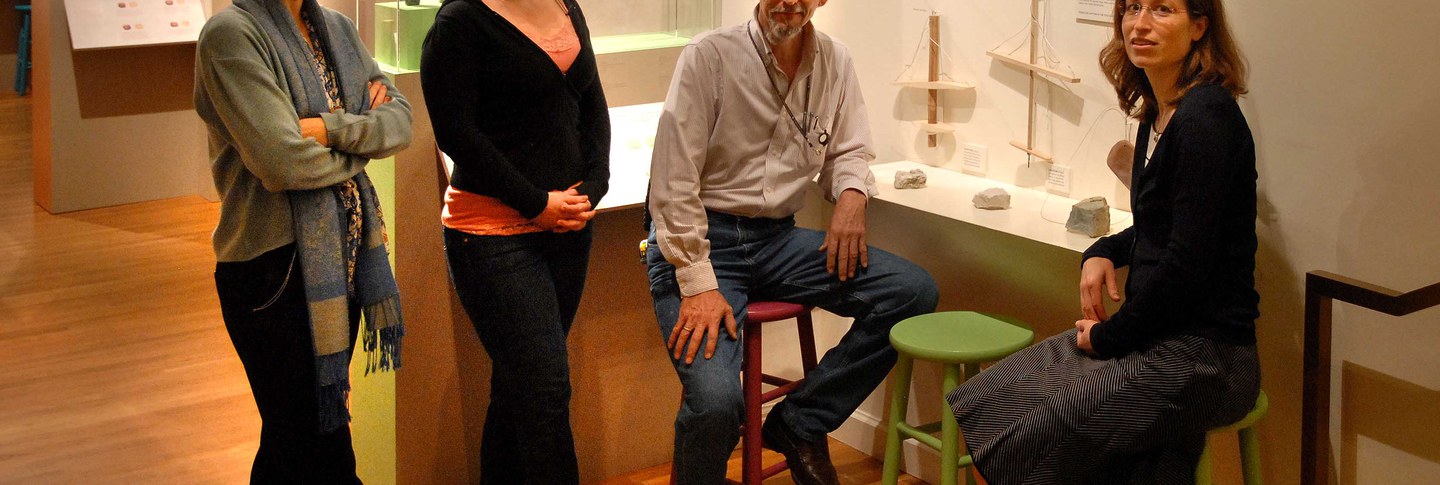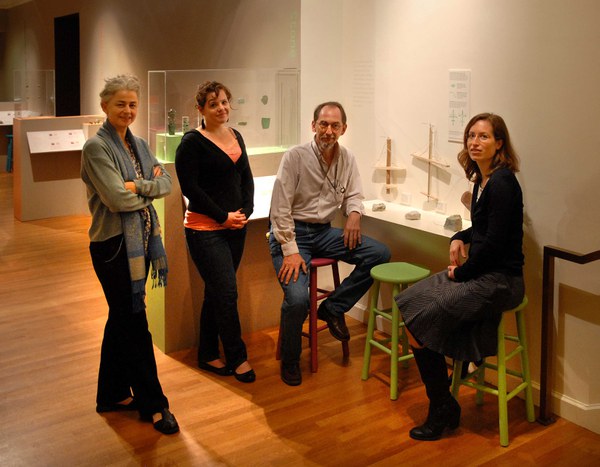Gudrun Bühl, Museum Director
Can you describe the concept behind the exhibit?
Exhibition-making starts with an idea around selected objects rather than with a fixed display plan. In the case of All Sides Considered, which was developed with the intention to highlight and exemplify the research of objects in our Maya collection, we were interested in exploring the many layers of each selected object or case study – the material specifics and cultural signifiers studied by archaeologists, art historians, scientists, and anthropologists. To bring the scholarly and scientific analyses into the display, expansive label text was of the essence; yet, so as not to distract from the aesthetic value of the objects, a display setting had to be created that would be able to bring these two sides into play and keep them in balance.
The solution we came up with was this: approaching the gallery from the museum entrance, the visitor perceives mainly the colorful accentuated pedestals carrying the highlighted objects. Text and further interpretative material comes into sight only after the interested viewer has entered the area. In general, our interest in experimenting with settings is a crucial aspect of the museum’s exhibition program to activate the relationship between art, art scholarship, and visitors.
It was important to place the objects in prime locations within the narrow gallery. Set in cases that are positioned perpendicular to the walls, the artifacts are accessible from all sides. At the same time, the placement prescribes a passageway through the display; the visitor walks right up to the artifacts and then is gently forced to ‘slalom’ around them.
Each case study is equipped with a stool that resembles not unintentionally a lab stool. It invites the visitor to linger and engage with each object and the rather text-heavy information, which includes ‘hands-on’ items, slide shows, and a movie clip.
Hillary Olcott, Museum Exhibitions and Programs Coordinator
What are some new elements that you incorporated into the display?
One of the novel things about All Sides Considered is the interactive nature of the displays. Incorporating the interactive elements into the labels presented several challenges to the museum team. The most difficult elements to incorporate were the iPads. The challenge arose during the design phase of exhibition planning. We needed to come up with a way to incorporate seamlessly the iPads into the labels so that visitors would feel as though they were interacting with the exhibition itself, not with iPads. It was also imperative that the design allowed visitors to use the touchscreens without access to any of the buttons. While we did not want visitors turning the iPads on and off, we needed a display that allowed the museum staff to do so. Similarly, we needed a design that securely held the iPads but made it easy to remove them when maintenance was needed. After many hours of brainstorming and several prototypes, we came up with a successful design. However, it was not until the displays were installed, the labels applied, and the iPads running that we all breathed a collective sigh of relief and stepped back to admire our work. Although the iPads require some maintenance, they are an absolute success. They allow visitors to touch, hear, and explore the Dumbarton Oaks Collection like never before. I look forward to dreaming up new ways to use this exciting technology!
Miriam Doutriaux, Pre-Columbian Collection Exhibition Associate
How does the exhibit reflect the current state of/trends in Maya scholarship?
The exhibit showcases several exceptional Maya objects from the Dumbarton Oaks collection that were carefully reexamined by experts over the past three years. It focuses on the objects and the science behind the recent Dumbarton Oaks publication Ancient Maya Art at Dumbarton Oaks. Six case-studies outline recent findings about the Maya, and illustrate some of the epistemological underpinnings of current Maya research.
Much knowledge about the Maya is derived from iconographic analyses, as evidenced in the comparative dating of 2,000-year-old etchings on a greenstone pendant. Careful observation and informed comparison with other objects often leads to new findings, including the discovery that four carved spheres in the Dumbarton Oaks collection are the earliest known Maya bone bells.
For example, experts in the fields of geology, mineralogy, conchology, biology, and physical anthropology contributed scientific opinions and analyses – from radiocarbon dating to X-ray diffraction analysis – to the study of a Maya mosaic mask. New technologies are also helping scholars to better visualize and experience the objects they study. A 3-D digital model revealed subtly carved features on a Maya stela, and X-rays exposed the production process of a rattle bowl with a hollow base.
Mayanists also rely on experimental archaeology to refine their understanding of ancient practices and production techniques. A carving station in the exhibit allows visitors to experiment with tool types used by ancient Maya carvers.
The exhibit is about the scholarly research process – the slow, painstaking work that underlies groundbreaking discoveries about the Maya. As museum visitors listen to a rattle bowl, flip through x-ray images, examine a 3-D digital model, and compare images or specimens, they are taking a scholar’s approach – and perhaps gaining a new appreciation of the thrills of Maya scholarship.
Chris Harrison, Senior Exhibitions Technician
Watch this video, in which Chris describes the workstation designed to allow visitors to experiment with tool types used by ancient Maya carvers.

